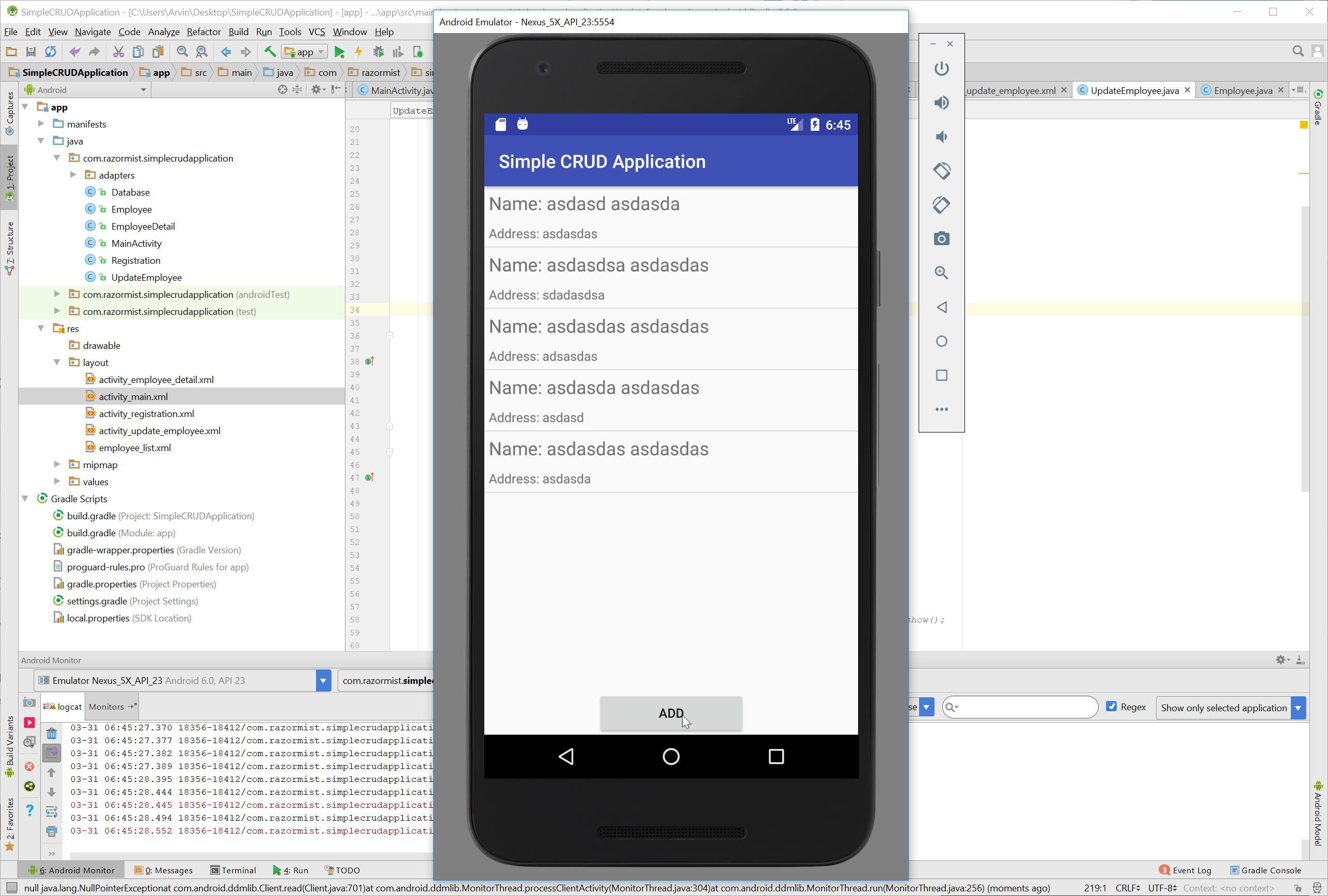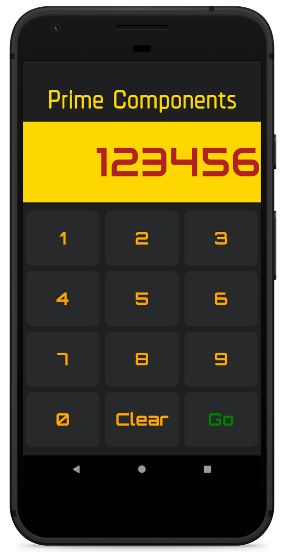

The code of this constructor looks like this: public MyDBHandler(Context context, Stringname, The database can be initialized in the constructor of the MyDBHandler class. We must also use import statements, as follows: import Type Student in the Name item, maintain the default options, and click the OK button:Īdding the following lines of code for the Student class: public class Student Right-click the myfirstdatabase package and selecting New > Java Class. We create the Student class in the Android Studio 3.0 by selecting app > java. The Student class contains fields, constructors, and properties as follows: My application model can be shown in the following figure: A third class (Student class) will need to be implemented to hold the database entry data as it is passed between the activity and the handler. The database handler will be a subclass of SQLiteOpenHelper and will provide an abstract layer between the underlying SQLite database and the activity class. The application will consist of an activity and a database handler class (MyDBHandler class). The Student table schema will look like this: My application will interact with a database named StudentDB.db, which contains a single table named Student. We will create a database Android application that has a UI as follows: GetReadableDatabase(): creates or opens a database for reading only.ĬontentValues allows key/value pairs to be declared consisting of table column identifiers and the values to be stored in each column.

GetWritableDatabase(): opens or creates a database for reading and writing. OnOpen(): called when the database is opened. OnUpgrade(): called in the event that the application code contains a more recent database version number reference. OnCreate(): called when the database is created for the first time.
#SIMPLE ANDROID APP JAVA ANDROID STUDIO UPDATE#
SQLiteOpenHelper is designed to make it easier to create and update databases. RawQuery(): executes an SQL query statement and returns matching results in the form of a Cursor object. Query(): performs a specified database query and returns matching results via a Cursor object.ĮxecSQL(): executes a single SQL Statement that does not return result data. Insert(): inserts a new row into a database table.ĭelete(): deletes rows from a database table SQLiteDatabase provides the primary interface between the application code and underlying SQLite database. Get() (such as getInt(), getDouble(), so on): returns the value of the specified contained at the specified column index of the row at the current cursor position. Move(): moves by a specified offset from the current position in the result set. MoveToNext(): moves to the next row in the result set. MoveToLast(): moves to the last row in the result set. MoveToFirst(): moves to the first row in the result set. GetCount(): returns the number of rows contained within the result set. Its methods include:Ĭlose(): release all resources used by cursor and close it. Android SQLite Java ClassesĬursor: a class provides access to the results of a database query. Like other RDBMSs, data is accessed in a SQLite database by using Structured Query Language (SQL).


are standalone server processes, then SQLite is embedded because it is provided in the form of a library that is linked in applications. If most RDBMSs such as MySQL, Oracle, etc. SQLite is a relational database management system (RDBMS).


 0 kommentar(er)
0 kommentar(er)
